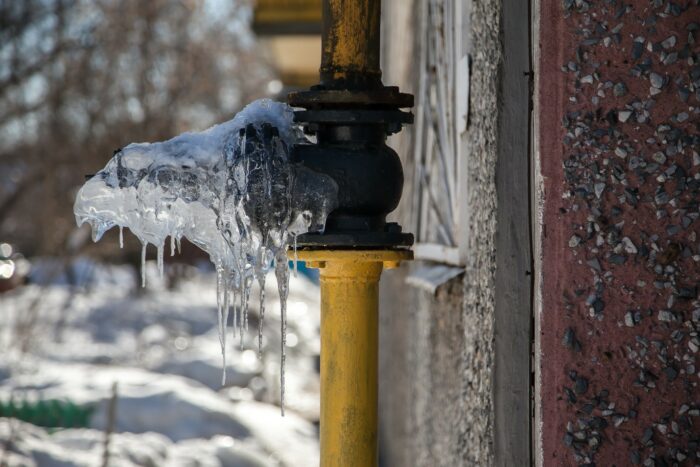Fall is here, and winter is coming. As mother nature preps for hibernation—with the flora and fauna shedding and growing their coats respectively—we should take a cue from her to prepare our homes before the season’s first cold snap.
That nip in the air is an early warning sign to get your house in shape before ‘Old Man Winter’ knocks. Being proactive with fall home maintenance not only ensures your living space remains warm and toasty throughout the frosty months, but it also increases the lifespan and efficiency of components, lowers your energy bills, and makes your home safer.
Read on for a home maintenance checklist and tips/ideas to keep the household running in peak condition during sweater weather.
1. Inspect Safety Features

As with everything else, safety first! A top-to-bottom review of a home’s safety features should be a standard practice in preparation for winter.
Ensure fire extinguishers are in good condition, replace the batteries of your carbon monoxide and smoke detectors, and discard fire hazards.
Outside the house, keep an eye for risky branches—including dead limbs, branches that are rubbing together, and those hanging precariously over power lines, the house, or driveway.
2. Double Check Heating Components

Stay toasty and save on your energy bill by inspecting your heating system to ensure it’s running at optimal efficiency like a ‘well oiled’ machine.
For furnaces, look out for blocked heating ducts or filters, misadjusted burners, and screeching furnace belts. With wood-burning stoves, check for loose joints, holes, and corrosions. If you prefer the snug ambiance of a fireplace, inspect the chimney/flue for damages, blockage, and a buildup of creosote.
PS: You may need a professional for some of these inspections and potential repairs.
3. Prep the Lawn for Greener Days Ahead

Yearning for a picturesque lawn come spring and summer? Start ‘sowing the seeds’ in fall. The idea is to create favorable conditions for your greenery to enter its winter slumber well-nourished and protected from the harsh weather.
Even though grass barely grows in the cold months, the roots are still active – which is why applying fertilizers during fall helps the lawn turn greener faster when the frost melts to beckon spring. Mulching is also a great way to buffer flower beds and lawns from brutally low temperatures. It helps regulate soil temperatures by acting as a form of insulation.
4. Protect Your Faucets from the Frosty Outdoors

Any exposed pipes in unheated areas such as those running along a wall? Uninsulated pipes are a potential hazard with a risk of bursting when temperatures drop below 32 degrees Fahrenheit. In addition to insulating your pipes, make sure you turn off and drain outdoor faucets or in-ground irrigation systems.
5. Ensure Your Roof is in a Condition to Shield You

Your roof is the first line of defense against the forces of nature. Any weakness in its structure such as a leak leaves you susceptible to significant damage and deterioration of HVAC, plumbing, electrical, and insulation systems. And when dripping starts pinpointing and solving the problem is a time-consuming hassle—which is why fall maintenance of the roof is a necessary proactive step.
Check for damaged or loose shingles, misplaced guy wires for those of you with roof-mounted TV antennas, deteriorated flashing around the vent pipes, skylights, walls, or the chimney, and any other form of damage.
6. Check for Air Leak

Picture this; “you’re all bundled up in your living room on a cold winter night tightly clutching onto a cup of hot chocolate. Then out of nowhere, a gush of chilly air slaps you out of your comfort.” A home with air leaks not only affects the coziness and warmth of your living space, but it munches away your power.
According to the U.S. Department of Energy, sealing leaks may help save as much as 20% of your energy bill. This alone makes a case for the importance of checking for drafts and sealing them up.
Inspect the condition of weatherstripping and caulk around entry points (windows, doors, cabling gaps, etc.). One way to do this is by holding a candle to any potential point of leakage or close a door/window on a piece of paper and check whether it slides out easily.
Once you identify a draft problem replace weatherstripping and seal any gaps with suitable caulk.
7. Maintain Your Gutters

Your roof’s gutters often go unnoticed in home maintenance projects, yet they play a critical role. This drainage system diverts gallons of water away from foundation walls and exterior walls. Clogging the gutters risks damage to the exterior or flooding to the interior.
So cleaning the gutters/downspouts is a must-have item in your fall home maintenance checklist. Also, inspect the joints, check for corrosion, and tighten brackets.
Bottom Line
In addition to these fall home maintenance tips, ensure you have the right winter equipment at your disposal. With these items checked off, you should be well-equipped and prepared to handle whatever the frosty weather throws at you.





